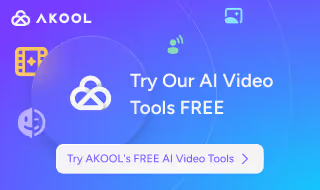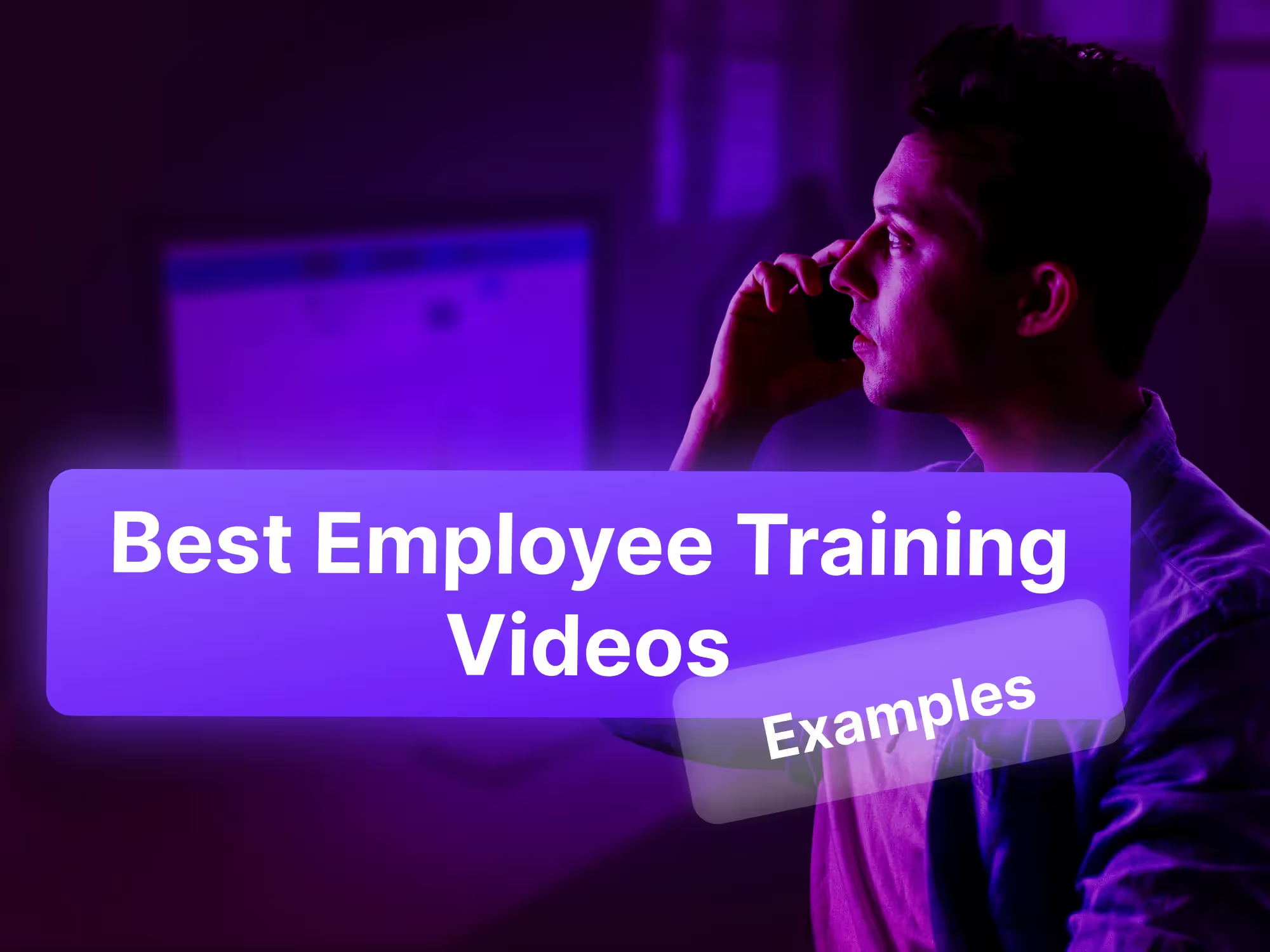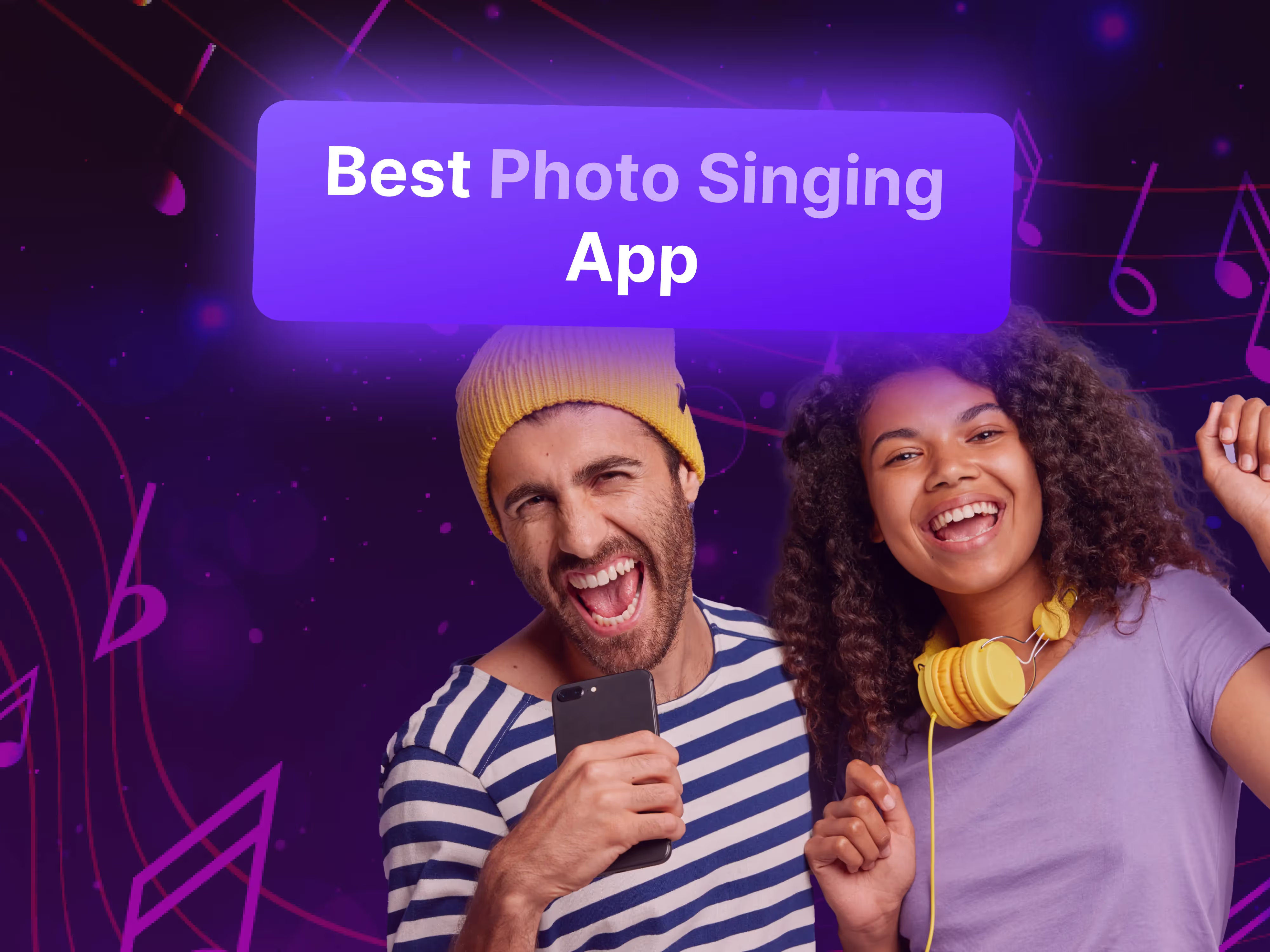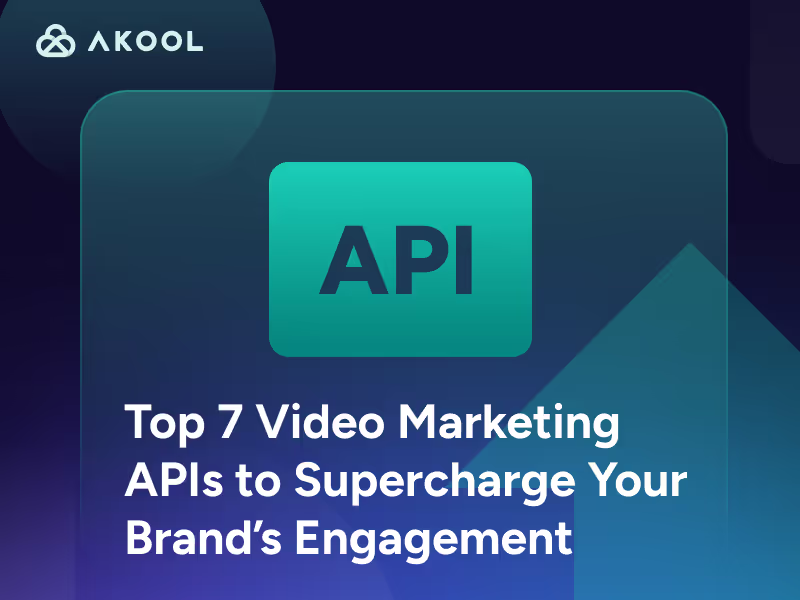Introduction: In 2025, video content dominates digital marketing – with video projected to account for 85% of all internet traffic by 2025. This surge in video demand means marketers must produce more video content faster, at lower cost, and at greater scale than ever before. AI video generators have emerged as a solution: these tools use artificial intelligence to turn scripts or ideas into polished videos within minutes, boosting productivity and audience engagement. From text-to-video platforms that transform blog posts into clips, to lifelike AI avatars presenting in multiple languages, AI video makers help brands meet the content crunch without a studio or big budget.
Marketers are leveraging these AI tools for everything from training modules and product demos to social media content – capitalizing on new capabilities like real-time avatars, automatic multi-language localization, and even voice cloning for personalized voiceovers. The result is faster video creation and the ability to easily tailor videos to different audiences while keeping costs in check.
Below, we compare five of the best free AI video maker tools for marketers in 2025. Each platform’s standout features, ideal marketing use cases, and limitations of the free tier are summarized. Akool leads our list at #1 with its innovative real-time avatar technology and marketing integrations, followed by strong contenders like Runway, DeepBrain AI, Lumen5, and Pictory. Read on to see how these free AI video creators stack up – and discover why Akool stands out as the top choice for marketers this year.
1. Runway – Generative Video from Text, Image, or Motion
Runway ML is a standout creative AI video tool that lets marketers push beyond standard talking-head videos. This platform can generate short video clips from just about anything – you can type a text description to do text-to-video, provide an image to do image-to-video, or even upload existing footage to “remix” its style with AI. Runway’s intuitive web interface means no coding is required – just enter your prompt or input, and the AI renders a unique video sequence for you. Under the hood, Runway uses cutting-edge generative models (now up to Gen-4 in 2025) that produce coherent visuals and smooth motion from your prompts, yielding results that inch closer to what a human animator might create. In addition, Runway includes built-in AI video editing tools – like one-click background removal, object removal, and stylization effects – turning it into a full AI-powered video editing suite, not just a generator.
Key Features of Runway ML:
- Multi-Modal Generation: Create videos in various ways – text-to-video (enter a scene description and let the AI animate it), image-to-video (upload a static image and have AI bring it to life with motion), or video-to-video style transfer (feed in a video and transform its style or colors). This flexibility lets marketers and creators experiment with different inputs for content creation.
- Advanced Gen-4 Models: Runway’s latest Gen-4 generative model produces significantly more coherent and high-quality clips than earlier AI models. It can maintain consistent characters and scenes across a 3–8 second clip without the glitches older models had. The result is short AI videos that look more polished and make visual sense, which is crucial for marketing visuals.
- AI-Powered Editing Tools: Beyond generation, Runway offers powerful editing features driven by AI. For example, you can remove backgrounds from your footage without a greenscreen, erase unwanted objects or people from scenes seamlessly, and apply artistic style filters to videos. These tools allow marketers to refine and tweak videos (AI-generated or real) quickly, all in the cloud.
- Cloud Collaboration: Runway is entirely cloud-based – processing happens on their servers, so you don’t need a high-end PC. You can invite team members to collaborate on video edits in real time, and easily export final videos in various aspect ratios (16:9, 9:16 vertical, square, etc.) for different platforms. This makes Runway handy for social media teams working together remotely.
Limitations: Runway ML is optimized for short-form video snippets. Its generative AI typically produces clips up to ~16 seconds long, so to make a longer video you would need to stitch together multiple AI-generated segments manually. The default output resolution is also relatively low (about 1024×576 by default, roughly 576p); if you need full HD or 4K, you’ll have to upscale the clips which consumes extra credits. Speaking of credits – Runway operates on a credit system. The free plan is truly free to start, but it includes a one-time allotment of 125 credits and limits exports to 720p resolution. This is enough to test the waters (roughly a few video generations), but heavy use will require buying more credits or subscribing to a paid plan. The credit-based model means that intensive usage can become costly, and unused monthly credits may not roll over. In the free tier, you’re also limited to 3 projects at a time. Finally, because Runway’s full creative power might be overwhelming for absolute beginners, it can have a learning curve – but marketers who invest some time can unlock incredibly unique visuals.
Use Cases: Runway ML shines for visual storytellers and social media marketers who want to create eye-catching, unconventional video content. A marketing team could use Runway to prototype a surreal product promo or an abstract branded video without a live shoot, simply by describing the concept and letting the AI generate imagery. Social media managers can quickly produce short video ads or artistic TikTok clips that stand out. Designers and artists use Runway for music videos or experimental visuals, given its strength in style transfer and creative effects. Even educators have leveraged Runway to illustrate complex concepts with animated diagrams or to create artistic lecture intros. In short, Runway is a versatile playground for anyone eager to explore AI-generated video beyond the typical talking avatar – it’s especially valuable for marketers aiming to capture attention with novel, creative visuals.
2. Akool – Real-Time Avatar Platform for Enterprise AI Videos

Akool tops our list as the best overall AI video generator for 2025, offering a powerful all-in-one platform for AI-driven video creation. Its standout feature is real-time interactive avatars – you can literally puppeteer a digital avatar live during meetings or streams, enabling instant, conversational video content. This real-time capability, combined with Akool’s high realism and expressiveness, bridges the gap between virtual and human presenters. Marketers can appear as an AI avatar in any language or persona on the fly, which is a game-changer for global marketing and live customer engagement. Beyond its avatars, Akool is packed with enterprise-grade features: robust API integrations (to embed Akool into your apps or connect with CRM and marketing platforms), scalability for high-volume video production, and top-tier output quality up to 4K (even 8K on higher plans) for studio-grade results.
Key Features of Akool:
- Real-Time Streaming Avatars: Drive a digital “twin” avatar that presents live, perfect for interactive webinars, virtual events, or live product demos. The avatars have rich gestures and emotional expressions, making them highly lifelike and engaging in real time.
- Multilingual Video & Localization: Generate videos in dozens of languages. For example, create one video and instantly render versions in 10+ different languages – hugely simplifying localization for global campaigns. Marketers can easily produce localized video ads or training content for international audiences.
- Voice Cloning Personalization: Clone your own voice or a brand voice and have the avatar speak in that voice. This adds a personal, on-brand touch to AI videos – e.g. a sales video that sounds like your CEO or a spokesperson, without them actually recording it.
- Seamless Integrations (CRM & Live Streaming): Akool offers an API and plugins to integrate into your workflows. For instance, you can use the Akool Live Camera to drop your AI avatar into live video calls (e.g. on Zoom or live streams), or connect Akool with CRM systems to automatically personalize video messages. These integrations make it easy to include AI video in marketing automation and customer communications.
- Ease of Use & Creative Tools: No technical skills needed – simply type a script and choose an avatar. Akool provides 80+ diverse avatar presenters (and even lets you create a custom avatar by uploading a video of yourself). It also includes fun creative tools like face swap and an AI image generator, all within the platform. This makes content creation fast and flexible for any marketing team.
Use Cases: Akool is ideal for companies and creators who need a versatile, scalable video solution. It shines in marketing and sales – for example, producing personalized video messages to leads, creating live product demo presentations, or auto-generating multilingual promo videos for different regions. Corporate teams use Akool for training and internal communications (imagine a digital trainer delivering onboarding in multiple languages), while content creators use it for engaging social media videos. Educators have even built digital teacher avatars that lecture in their own cloned voice, saving time on recording lessons.
Limitations: Akool’s free trial provides a generous taste of the platform but with some limits – for instance, videos may be capped in length or resolution. You can try out the core features, but higher-quality outputs (full HD/4K) and longer or unlimited video renders require a paid plan. The free trial videos also carry minor restrictions on usage/quality. Full access to Akool’s capabilities (e.g. 4K video, faster rendering, high-volume production) comes with its premium plans. That said, Akool remains accessible even to small teams via its user-friendly interface, and it has proven enterprise readiness (with Fortune 500 companies among its users) for when you scale up. Overall, Akool leads the pack with its cutting-edge real-time avatars, multilingual support, and comprehensive feature set – a compelling choice for marketers looking to create AI videos that truly engage and globalize their message.
3. DeepBrain AI – Avatar Video Generator for Business Content
DeepBrain AI (also known as AI Studios) is an AI video generator focused on turning scripts into professional videos with AI avatars. Think of it as having a virtual spokesperson for your company who can deliver any message you type. DeepBrain provides a library of realistic business-style avatars (over 100 to choose from), which you can select to narrate your script in a lifelike video. It supports over 80 languages out of the box, with natural text-to-speech voices for each, so it’s easy to create multilingual videos for global audiences. You simply input your text, choose an avatar and voice, and the platform generates a polished video of that avatar presenting your content – complete with gestures and synced lip movements. This makes DeepBrain AI especially useful for marketing teams creating explainer videos, training modules, or any informational content where a talking presenter would boost engagement. The platform also offers handy tools like one-click translation (to instantly create versions of a video in different languages) and customizable templates for various scenarios (e.g. corporate training, product intro, etc.), speeding up the video creation process for business use cases.
Key Features of DeepBrain AI:
- Diverse Avatar Presenters: DeepBrain AI offers a vast collection of photorealistic avatars representing different ages, ethnicities, and professional looks. You can pick an avatar that fits your brand tone – from a friendly teacher persona to a formal business spokesperson. This saves marketers from having to hire actors for each video; the AI avatar becomes your on-demand presenter.
- Multi-Language & Translation: With support for 80+ languages and 100+ AI voices, DeepBrain excels at localization. You can type a script in English (or any language) and have the avatar speak it in Spanish, Chinese, French – you name it. The platform can also auto-translate a video’s script into other languages and dub the avatar’s voice, which is perfect for global marketing campaigns that need content in multiple regions.
- Script Assistance & Templates: DeepBrain includes AI script assistant features to help refine your script or even generate one from an outline. It also provides many templates and presets (e.g. layouts with text and graphics) tailored for common business video types – like a product demo, a webinar summary, or an FAQ video. Marketers can start from these templates to save time and ensure a clean, consistent look.
- Collaboration and Integration: The platform is cloud-based and supports team collaboration through shared workspaces, so multiple team members can work on a video project together. There’s also an API for enterprises to integrate DeepBrain’s video generation into their own apps or workflows. While more of an advanced feature, this means a company could, for example, plug AI video generation into a content management system or marketing app for mass-personalized videos.
Use Cases: DeepBrain AI is geared towards business video content. Marketing teams use it to create things like product explainers, quick promo videos, how-to guides, and even personalized sales videos – all without a film crew. It’s also popular for internal communications and training: a company can produce training modules or HR videos with a friendly avatar instructor, saving executives from appearing on camera repeatedly. Thanks to the language support, you can easily generate localized versions of marketing content (subtitle and voice in other languages) to reach different markets. In short, if you have a script and need a polished talking-head style video, DeepBrain AI is a convenient choice. It delivers a result similar to having an actor reading your script in a studio – useful for case study summaries, marketing FAQs, educational snippets, and more.
Limitations: DeepBrain AI (AI Studios) does not offer the kind of real-time, live avatar puppeteering that Akool does – it’s for pre-recorded videos only. Nor does it support cloning your own voice for the avatar; you are limited to the provided voice options (which are high-quality, but not your custom voice). The free version of DeepBrain is somewhat limited: new users can sign up and create a few videos to test it, but these exports will carry a watermark on them. In fact, the free plan currently only allows up to three video projects total, which is really a trial to demonstrate the tech.
To use it regularly, you’ll need a paid subscription – plans start at around $24 per month for individuals, with higher tiers for teams. Paid plans remove the watermark and offer much higher video lengths, more avatar choices, and better resolutions (the free outputs are capped at 720p). Finally, while the avatars are realistic, they can sometimes appear a bit flat in emotional expression compared to a real human or Akool’s more interactive avatars. Overall, DeepBrain AI is an excellent tool for generating scripted business videos, but its full power (and watermark-free results) are unlocked only with a subscription.
4. Lumen5 – AI Video Maker for Blog Content and Social Media
Lumen5 is a popular AI-powered video creator that specializes in turning blog posts and written content into videos. It’s essentially a content repurposing tool: you feed it an article, blog post, or even just an outline of text, and Lumen5’s AI will automatically produce a storyboard for a video. It identifies key sentences or points from your text and pairs them with relevant stock images, video clips, and dynamic text overlays. The result is a slideshow-style video (with your text highlights appearing on each scene) that you can then refine using Lumen5’s simple drag-and-drop editor. For marketers, this is a fantastic way to re-use existing content – for example, turning a long-form blog article into a short, engaging video summary for social media or turning a press release into a quick promo video for LinkedIn. Lumen5 provides a library of themes, fonts, and music to fit various branding styles, and it allows you to output videos in different aspect ratios (16:9 for YouTube, 9:16 vertical for Stories, etc.), which covers all your social platforms.
Key Features of Lumen5:
- AI-Powered Storyboarding: Lumen5 automatically creates a storyboard by extracting key phrases from your text and laying them out as captions across a sequence of scenes. It will suggest or auto-select background visuals for each scene using AI (e.g. if your sentence mentions “growth”, it might pick a stock image of a growing plant or a graph). This jump-starts the video creation, so you don’t have to start from scratch.
- Huge Stock Media Library: The platform integrates millions of royalty-free stock photos, video clips, and icons. As it builds your video, Lumen5 will pull from this library to match your content. You can easily swap out any suggested media with a different choice from the library via search. This is great for marketers who need professional visuals but don’t have their own imagery for every topic.
- Customizable Formats and Themes: Lumen5 has preset video formats for all major social channels – from wide YouTube videos to square Instagram videos to vertical Stories. You choose the format up front (and can change later), and it will ensure your text and visuals are optimized for that frame. There are also many themes/styles you can apply (which set fonts, colors, and animation styles) to match your brand’s look and feel.
- Easy Editing & Branding: Using Lumen5 is like editing a PowerPoint slide deck. You can click on any scene to edit the text, drag text boxes around, adjust the timing of each scene, or add new scenes. It’s very beginner-friendly. You can also insert your brand’s logo or watermark, and if you have a brand color palette and fonts, paid plans let you set up a brand kit so every video stays on-brand. Adding background music from the built-in music library or uploading your own track is straightforward as well.
Use Cases:
Lumen5 is a favorite tool for content marketers and social media managers. It truly excels at content repurposing – for example, if your marketing team has a library of blog posts, whitepapers, or case studies, Lumen5 can quickly turn those into short videos to share on Facebook, Twitter, LinkedIn, or Instagram.
Limitations:
Lumen5’s free plan is quite usable but has tight limitations. With a free account, you can create up to 5 videos per month and export them at 720p HD resolution. Those videos will include Lumen5 branding (a watermark logo on the video), which isn’t ideal for official company content. To remove the watermark and get higher resolutions (1080p), you’ll need to upgrade to a paid plan (their Basic plan starts around $19/month). Another limitation is that Lumen5 videos have a certain style – they are primarily automated slideshows. Despite these limits, Lumen5 remains a go-to free tool for quickly making videos out of written content, saving marketers a ton of time in video creation.
5. Pictory – AI Summarization for Long Videos and Webinars
Pictory is an AI video tool designed to automatically summarize long-form videos into short, shareable clips. It’s ideal for marketers who have lengthy content – such as webinars, virtual event recordings, customer testimonials, or podcast videos – and need to distill them down into bite-sized videos for social media or promotional use. Pictory’s AI can take a 60-minute webinar recording, for example, and identify the key highlights or important segments.
But its standout feature in 2025 is the “video highlights” capability that saves marketers enormous time in editing down content. With Pictory, you can transform a long Zoom recording or a case study interview into a polished 2–3 minute highlight reel ready to post on LinkedIn, YouTube, or your website.
Key Features of Pictory:
- Automated Video Summarization: Simply upload a long video (such as a webinar, training session, or vlog) and Pictory’s AI will analyze the transcript and visuals to pick out the most important parts. It then generates a condensed summary video, often complete with transitions and captions. This can turn a 45-minute talk into a 5-minute “key takeaways” video without manual editing. Marketers can quickly get highlight reels of events, or create teaser videos for full-length content.
- Highlight Reel and Clip Extraction: Pictory can also cut your video into multiple short clips, each focusing on a particular insight or question. For example, from a one-hour webinar, it might produce a set of 5 short clips (30 seconds to 1 minute each), each covering a question answered by the speaker. This is great for social media, where you can drip out these short clips over time, extending the life of one piece of content.
- Text-Based Video Editing: Pictory provides a transcript of your video and lets you edit the video by editing the text. If you want to remove a section where the speaker went off-topic, you just delete that text and Pictory cuts that part of the video out. This makes editing very intuitive, even for those without video editing experience. It’s also handy for removing “ums” and pauses – you can delete those from the text and they vanish from the video.
- Captions and Branding: The platform automatically generates closed captions for all videos (an important feature since many people watch clips on mute on social platforms). You can style the captions to fit your brand. Pictory also allows adding your logo, custom intro/outro, and music. The goal is to help you produce finished, branded mini-videos that look professionally edited, with minimal effort.
Use Cases:
Content marketers and social media teams love Pictory for repurposing and promoting long content. A common use case is after hosting a webinar or virtual event: instead of uploading the full hour video (which few will watch), you can use Pictory to generate a 5-minute “highlights” video that captures the best insights, and then share that widely. Similarly, if you have a recorded customer case study or an interview, you can create short testimonial snippets that can be embedded on webpages or shared as social proof. Podcasters who record video can use it to clip out the most interesting 1-minute moments from each episode to entice viewers on social media. Even for internal communications, if you have a long meeting recording, Pictory could pull out the key updates for an internal newsletter. Essentially, Pictory squeezes more value out of long videos by creating multiple smaller assets. It can also generate summary videos from long text documents or blogs, but its ability to work with video input is what sets it apart in this list.
Limitations:
Pictory does not offer a perpetual free plan – instead, it has a 14-day free trial for new users. During that trial you can use all features to create videos, but note that any videos you export in trial mode will include a small Pictory watermark on them. Think of it as a smart video condensing tool to add to your marketing arsenal. Within that niche, it’s extremely useful for maximizing your video content’s ROI.
Conclusion:
AI video makers have become indispensable for marketers in 2025, enabling rapid, cost-effective content creation and personalization at scale. Whether it’s converting blogs to videos with Lumen5, generating creative visuals from scratch with Runway, or localizing an avatar-led promo using Akool or DeepBrain AI, these tools help marketing teams meet the massive demand for video content without blowing budgets or timelines.
Among these tools, Akool stands out as the top choice for marketers who want cutting-edge capabilities – its real-time avatars, voice cloning personalization, and enterprise integrations open up possibilities (like live interactive marketing avatars and hyper-personalized videos) that others simply don’t offer in a free tier.
As video continues to dominate online content, embracing AI video makers will be key for staying ahead in marketing. Try Akool’s free trial to experience real-time avatars and global scalability in your video marketing, and take the first step into the future of AI-powered content creation.



.avif)

.avif)



